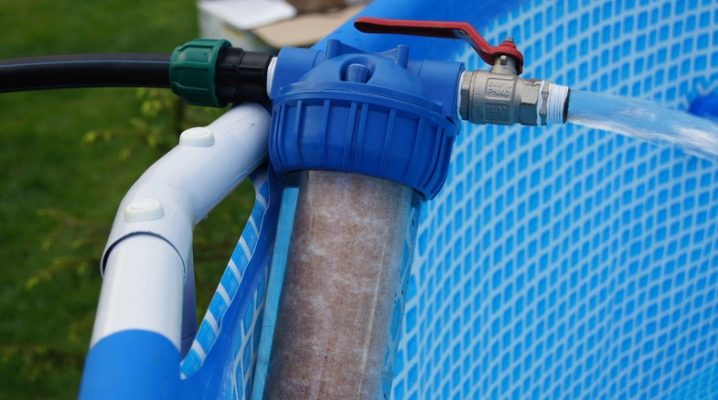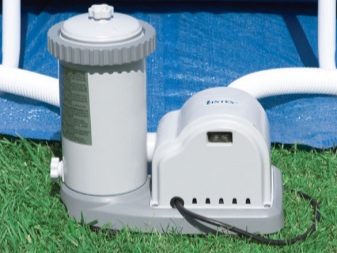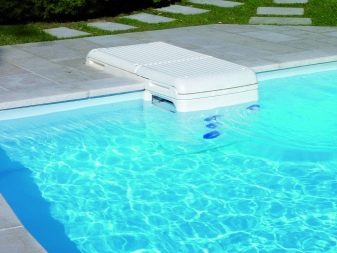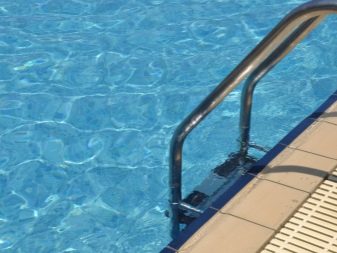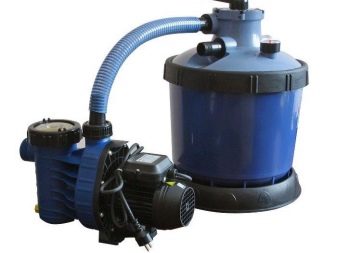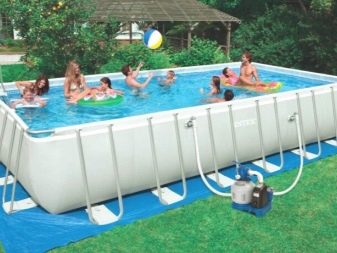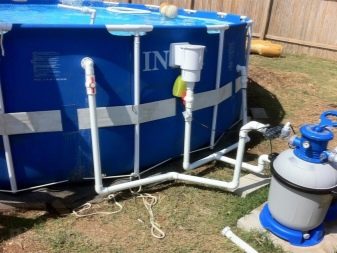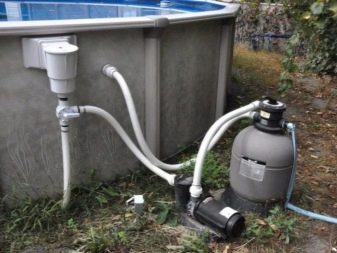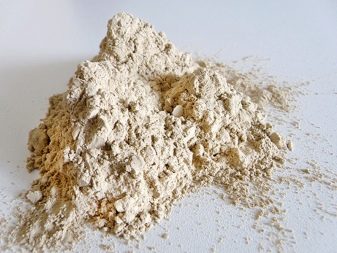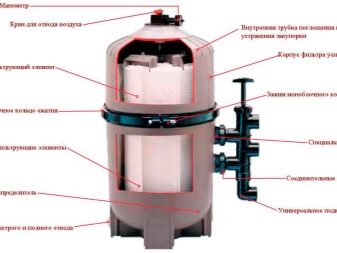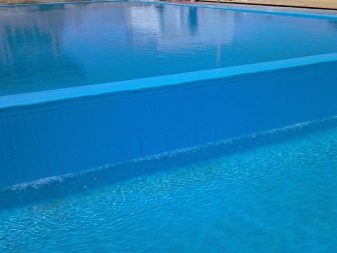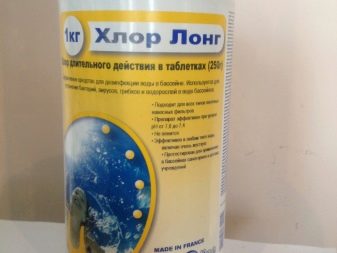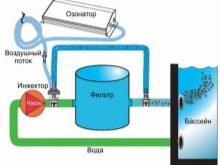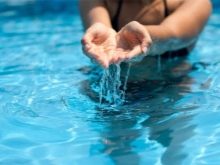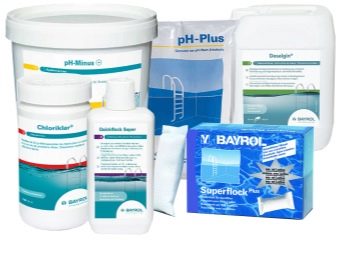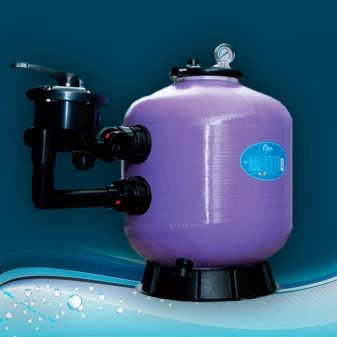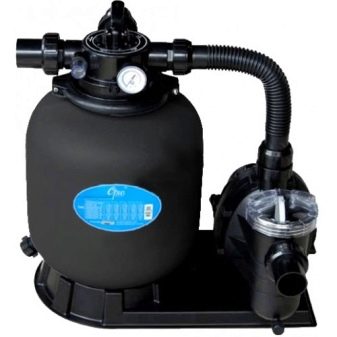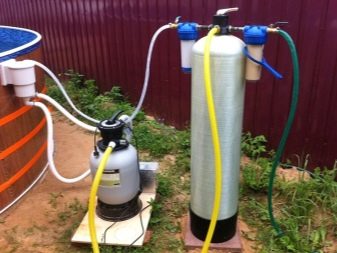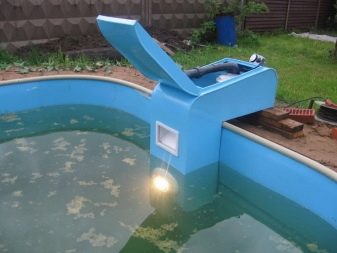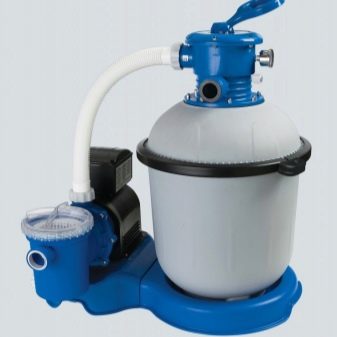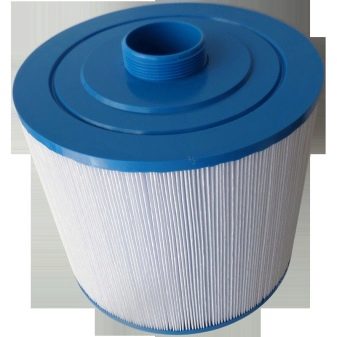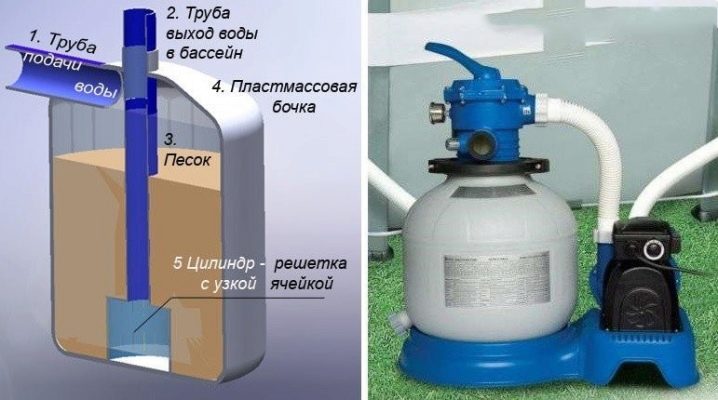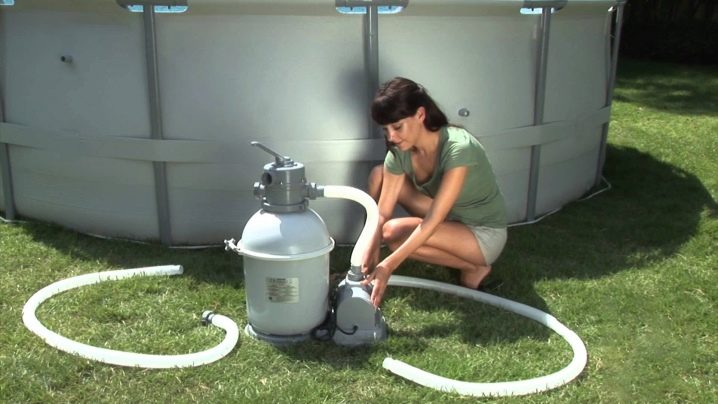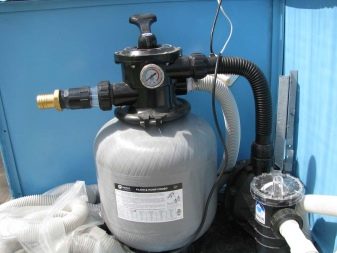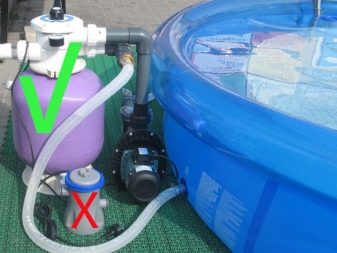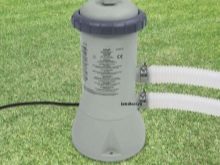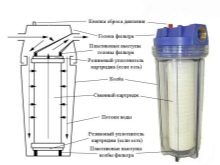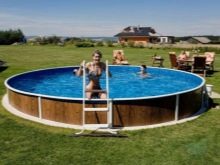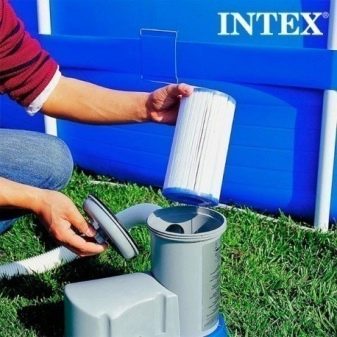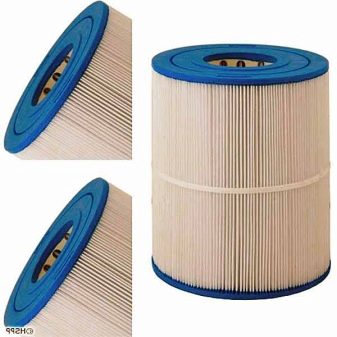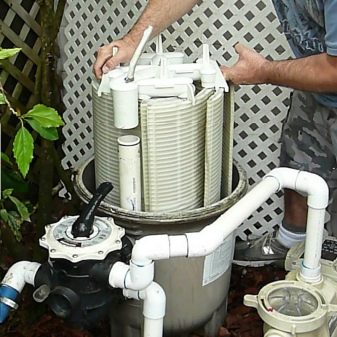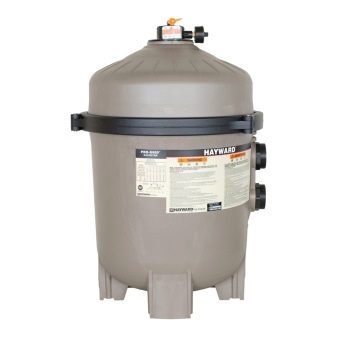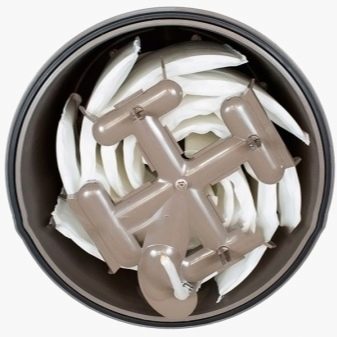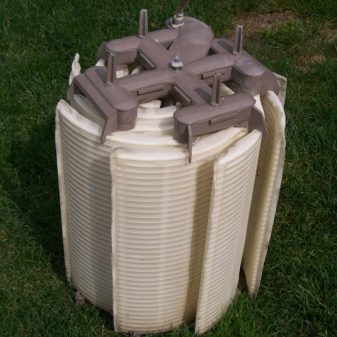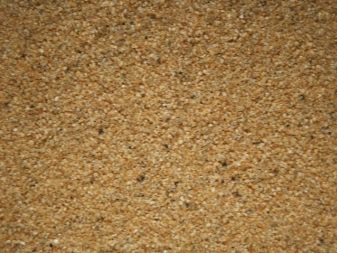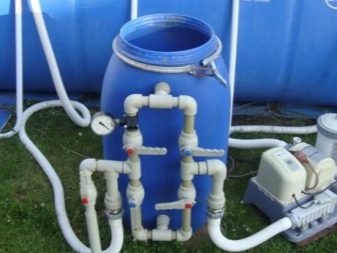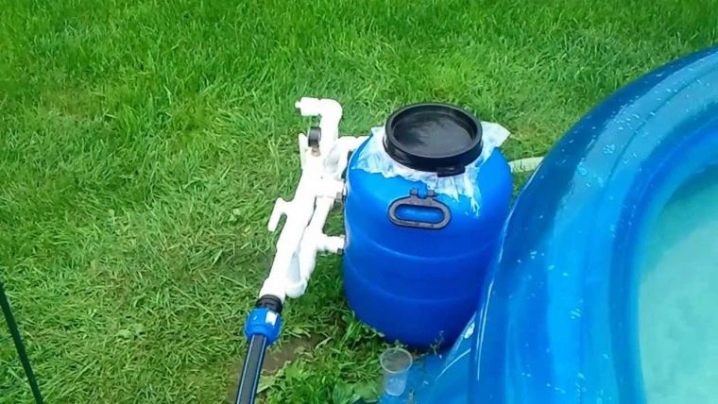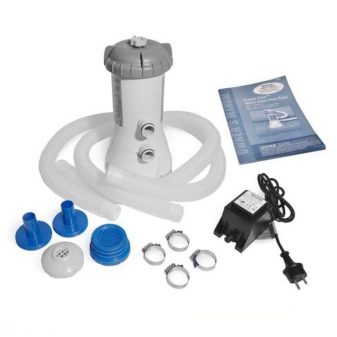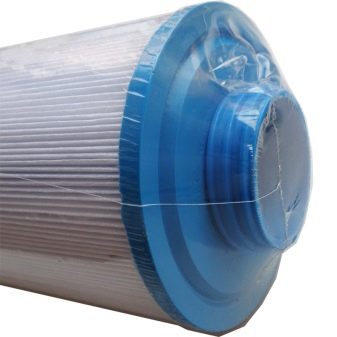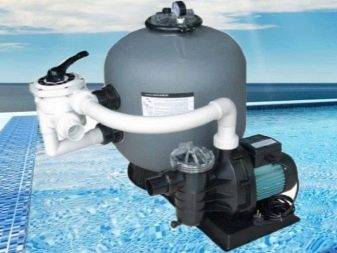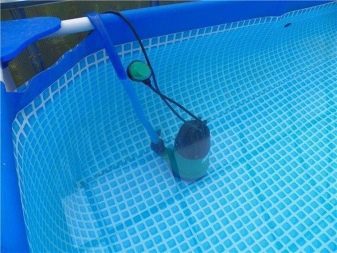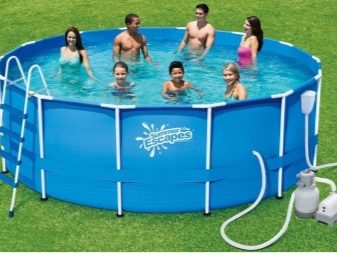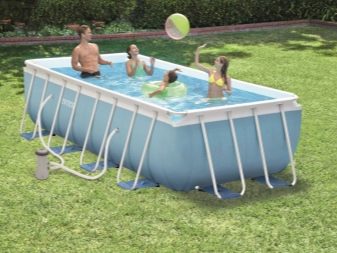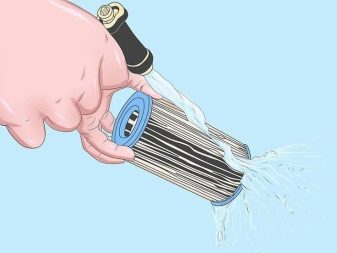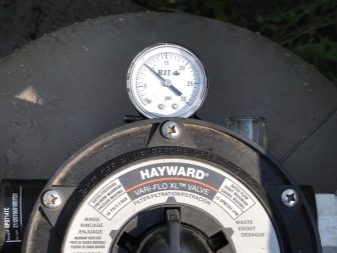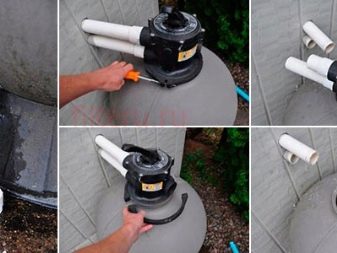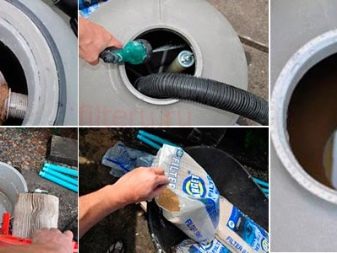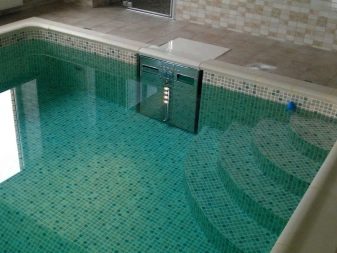Pool filters: types and nuances of choice
If it is planned to install a swimming pool in the construction of the dacha, then you should think about the appropriate filter for water purification. Selection of the right option at the design stage of the reservoir will increase the duration of the operation of the pool and reduce the cost of water disinfection.
Features and Purpose
The purpose of the filter for artificial reservoirs is to combat water pollution — it is more efficient than using nets or trash overflow devices. Filtering devices purify water from various types of natural and mechanical impurities. They cope with the unpleasant smell that appears in the pool due to the active multiplication of bacteria due to the heating of water under the action of the sun and atmospheric phenomena.
The installation of a filter for the treatment of pool water is also necessary to maintain the sanitary state of the bowl. Such equipment provides users with comfortable conditions when taking water procedures, preventing infection of the body by stagnant products. These are modern devices that are designed to improve the quality of water; they do not allow the development of infectious and skin diseases.
As a rule, pool cleaning equipment is more often produced as a separate unit. It consists of a special water intake chamber and filter installation. Due to this arrangement, it is possible to maintain the required level of water purification during the whole filter operation. In this case, the dimensions of the device are selected strictly according to the type and size of the pool.
Each such cleaner has its own characteristics and principle of operation.
The principle of operation of the standard device is simple: dirty or stagnant water is pumped into the water intake chamber through a special pump. In it, it undergoes primary cleaning with chemical reagents. After that, the accumulated volume of water is passed through the filter system, carrying out mechanical cleaning.Water is purified from solid impurities and microorganisms and only then goes back to the pool.
Disinfection of water is provided by circulating cleaning systems. It is especially relevant during the period of stagnation. However, the efficiency of purification is subject to the type of built-in filter, as well as the speed of the cleaning process. According to generally accepted sanitary standards, its frequency should be 2-3 times a day, and the frequency of water treatment does not matter.
Mixture. Various materials are used as a filter filler: from natural to synthetic. At the same time, the filler can be not only one-component, but also combined. For example, one type of mixture is diatomite, including diatomaceous earth, mountain flour, infusorial earth. It is a loose sedimentary rock that looks like cement powder. The composition differs in that after cleansing it enriches the water with silicon.
This mixture is also unique in that the purification of pool water with its help minimizes the use of chemical reagents (approximately 80%). It makes water useful, which puts her choice at the forefront among the cleaning devices for an artificial reservoir.
Unlike this mixture, when performing a chemical cleaning, water can pass through several filters. Schemes are different and in some cases allow you to achieve enriched water with oxygen.
Reagents kill germs and bacteria. Among such materials, chlorine, bromine and iodine are particularly prominent. However, the use of chlorine is associated with the appearance of an unpleasant odor. Skin after chlorinated water will be tight and dry.
In addition, the use of chemicals can create toxic compounds, which include, for example, chloramine. To remove it when filtering water using a comprehensive cleaning system.
Bor is inferior to chlorine only in value. It destroys the fungus, swamp odor, viruses, while not affecting the hardness of the water. However, for proper cleansing its dosage should not be exceeded.
In the cleaning of pools using flocculants. These drugs purposely increase the size of boron particles so that they can precipitate. Such reagents cope with the turbidity of the liquid inside the tank.
The use of ozone, ultraviolet radiation, silver and copper also has its own characteristics.For example, exceeding the dosage of ozone in the cleaning system can harm the health of swimmers. Installing a lamp is an alternative to chemical mixtures. However, it works well only in clean water. Copper and silver ions work at the expense of electrodes and prevent the pool from turning into a swampy lake with algae.
Copper, like flocculants, performs the function of coagulants. However, such systems do not allow to refuse chlorination.
Today, in order to improve the quality of cleaning, manufacturers are developing complex types of cleaners. For example, when choosing UV radiation, you can add a mixture of sodium hypochlorite, hydrogen peroxide or ozone.
Kinds
Today, manufacturers offer to the attention of customers a lot of various cleaning devices that are suitable for the care of home stationary, frame and inflatable water bodies. They can be classified according to the method of purification, as well as the type of filter material.
According to the principle of operation of the device can be:
- electrophysical;
- chemical;
- mechanical;
- combined.
Filters for water purification of the pool of the electrochemical type work by ionization of silver and copper, as well as ultraviolet and ozone.Radiation and ionization are recognized as a rather effective system for filtering water from artificial reservoirs. They are distinguished by a high level of cleaning, but they are expensive, which forces the buyer to look for more acceptable cleaning options for their pools.
Chemical analogues work by chlorine, bromine and iodine. Reagents of such equipment are not always safe for users of swimming pools. In some cases, purified in this way water leads to allergic reactions of the skin, which is especially dangerous for allergies and children.
This type of filter does not completely solve the problem of water purification, so more often customers choose devices of the combined type.
In addition to them, the popular type of filter for the pool today is a mechanical device. In most cases, such equipment is characterized by simplicity of design, compact dimensions and reasonable cost. This equipment is effective in cleaning the tank with a total area of up to 10 m2 - it eliminates large and small debris, removes microorganisms that provoke water blooms.
By type of installation filters for the pool can be mounted and ground. The first types are bought mainly for tanks of frame and inflatable type up to 10 cubic meters in volume. m. Usually attachments are attached to the frame of the pool. Ground analogues are installed near an artificial reservoir. They include a control panel and a transfer pump.
By the type of filtering component, mechanical devices are divided into three types:
- sandy;
- cartridge;
- diatoms.
Each species has its own characteristics, which affects its quality indicators and performance characteristics. To understand which one is better, it is worth having an idea about their work and the nuances of exploitation.
Sand
Such a device is characterized by coarse water purification. Externally, it is a closed structure with two openings for water supply and discharge. Inside the case is the cleaner itself, which is used as quartz or glass sand. The thickness of the filter layer may be different - this is due to the cost of the model: the more expensive it is, the thicker the layer.
In variants of the budget type of sand may be quite a bit (0.5-0.8 mm). Expensive analogues can have 3 layers of cleaner of different fractions.In addition to financial attractiveness and simplicity of design, such a device is characterized by ease of maintenance. The disadvantage is the large size and weight of the equipment. Such filters must be constantly washed.
The frequency of their washing depends on the intensity of use of the basin itself. Usually this process is performed at least once a week due to the back-directed pump.
In order to prevent lime deposits inside the sand filter, special compositions are introduced into the system. After a few hours, the device is washed according to the standard procedure. The change of filler in such devices depends on the type of sand used for cleaning. If there is quartz sand inside, it must be changed at least once every three years. For the glass version it is enough to change 1 time in 5 years.
The connection scheme of the filter in such models may be different.
To date, this process can be performed in three ways.
- Installation of the pump in front of the tank with sand. In this case, the water has to leak through the sand under pressure.
- Installation of the pump after the filter. Suction and vacuum underpressure are created in a closed container, which ensures that water is sucked into the filter.
- By pumping purified water by installing a pump after the filter.Water in this case enters the tank with the cleaner by gravity.
Cartridge
These cylindrical devices are equipped with thin polypropylene membranes. The effectiveness of such devices is twice the performance of sand analogues. With their help, it is possible to purify the water of an artificial reservoir from various suspensions of 10 microns and more. Typically, such a device is a structure in the form of a flask with a removable or hinged lid. In addition to the cartridge, there is a plastic bag inside the case, which is necessary to collect filtration waste.
Such equipment is characterized by compact size and external aesthetics, which is important for owners of summer cottages. At the same time, the device is not without flaws: for trouble-free operation, it is necessary to stock up on propylene membranes and pay a decent amount for the filter.
Cartridges are easy to change, but they have to be washed at least once a day. When pollution is no longer possible to wash, the cartridge is changed. The frequency of changing the device varies from 3 to 12 months.
Such specimens do not cope with the purification of large pools. As for performance, they depend on the cartridge itself, which, in addition to polyethylene, can be woven. For example, products with a polyphosphate salt filler are recommended for home use. To remove the unpleasant smell will help the device with carbon filler. If you need to effectively destroy the bacteria, you can buy a product with a filler of ion exchange resins.
Diatom
In comparison with other analogues, this filter is more efficient. It purifies the water not only from coarse suspensions, but also destroys all the smallest particles, as well as microorganisms. According to some information, such a filtration system gives water health-improving properties. The filler of such a filter is a soil containing crushed seashells of marine life (shells diatoms). The case of the device is equipped with several cartridges at once, which contributes to a finer purification of water for the pool.
However, this equipment today is not in demand among customers due to the high cost that not every owner of the land plot can manage. In addition, its maintenance is difficult, and the fillers need to be changed at least once every 6 months.In order for the diatomite assembly to function without failures, it is often necessary to call a specialist who will replace or dispose of the spent filter.
The purification of such a filter is carried out by means of a chemical reagent for dissolving organic particles in bulk materials. Even with the purge of these filters have to change often. The cleaning mixture itself of these cartridges is toxic, which complicates attempts at self-cleaning.
Homemade
If you wish to make a filter for cleaning the pool water, you can do it yourself, without the help of experts. In this case, you must select a connection option. It depends on the available components, the type of pool (stationary, frame or inflatable), as well as the organization of the tank drain.
For example, for homemade sand filter may need such parts:
- plastic container in the form of a barrel with a volume of 50-60 liters with a large bore at the top;
- pump filter with a 150 W pump;
- quartz sand;
- hoses and fixing clamps;
- water filter for intensive cleaning;
- water intake with small cells in the form of a grid.
As a rule, such constructions work flawlessly if they are assembled according to all the rules. For the barrel, a permanent place is immediately determined where it is installed. It should be near the pool.
The hose is connected to the water intake, then lowered to the bottom of the container and connected to the pump. Tara is covered with sand for about three-quarters of its volume. Above fix the hose that provides access to water from the pool. A coarse filter is placed between the pump and the barrel. The second hose is connected to the pump.
How to make a sand filter for the pool with your own hands, see the following video.
Famous manufacturers and reviews
Today, on the market for such products you can buy any version of the filter system for the pool. At the request of the customer, sellers will always help you choose the product with the necessary power and performance. Among the rich selection of quality products can be noted variants of Spanish manufacturers. Worth noting are the cleaning systems of companies. Kripsol, Hayward, Emaux.
For example, buyers emit Kripsol Sevilla STN406-25, Kripsol Granada GTN406-33 and Kripsol Balear BL 760 models. However, they note that the last two modifications are equipped with built-in alluvial devices.Some varieties work with the use of multi-layer filters, which consist of quartz sand, gravel and coal fractions (for example, coal anthracite). Other models worthy of purchase include products. Behncke Cristall D900 and Emaux FSP350-4W.
Not bad filters for swimming pools brands Intex. They are equipped with a chlorine generator. Their filtration elements are made on the basis of cartridges. Noteworthy and cartridge filters for SPA-pools series Premium J300, 400.
Also interesting are the products of the Dutch Allseas Swim and Spa. These filters can be rinsed under pressure and used for a jacuzzi.
How to choose?
Choosing and buying the right type of device depends on a number of factors. As a rule, this issue should be solved at the design stage of the pool itself. With a careful and deliberate approach to this issue, you can reduce the cost of maintaining the tank. Initially, experts are repelled by the type of artificial reservoir, the planned intensity of its use, and then consider the technical parameters of water pumps.
Performance is key. It is calculated in liters or cubic meters, processed by the system for 1 hour of operation.For example, if you need a filter to clean a large pool, its rate of output should be at least 500 liters per hour. You can choose the right option on the basis of calculations. To do this, the total pool is multiplied by 2.5 and divided by 10.
In addition to power, you need to pay attention to the rate of purification of water. You can ask the seller about the time required for a complete run of water. This indicator can be from 6 to 8 hours. Water per day should pass through the filter 3-4 times. It is important that the filter copes not only with large particles, but also removes small inclusions.
To understand the degree of purification, you can pay attention to the specified filtration rate, as well as the type of filter used. It usually turns out that the lower the rate, the better the filter cleans the water. However, the total volume cannot be less than three passes in 24 hours. The increase in speed will affect the drop in the quality of the water being filtered for bathing.
It is important to take into account the nuance that for a powerful pump the capacity of the filler should be large. As a rule, cleaning equipment is sold immediately with filters. The bundle often allows you not to pick up the capacity tothe pump. Selection can be made on the basis of specific models, viewed in advance on the counter of a particular store.
For a better understanding of the technical possibilities, it is worth visiting the manufacturer’s website and inquiring about the address of a particular store, after finding out if it is the official supplier of the brand.
You can also see the specifications stated by the manufacturer, relate them to the type of pool, and even clarify the compatibility of a particular product through online communication with company managers. To have reliable information about quality, you should visit the forums on filters and ask what people write about them who have already installed these devices. If opinions prove the expediency of the purchase, you can re-go to the store.
When buying, you should ask the seller for a certificate and accompanying documentation for the cleaning system for the pool - its presence will indicate the quality of the product, because the product takes a long time. Any refusal to provide a certificate of conformity with generally accepted standards will tell you about a fake product. It is necessary to rely on the price: a quality product is not sold at a discount and on sale.In addition, it is important to take into account the guarantee of the goods.
Tips
Water in the pool should be cleaned constantly. This is especially important if it is not originally clean, has impurities of rust. It should not turn green if the pool is not used. Even clean water needs purification.
For this, it is necessary to turn on the filter at least twice a day or once every 10 hours. For example, this will be enough to maintain the purity of the reservoir with a volume of 15-20 m3, while the water will have time to pass through the treatment system twice.
Often during operation, the filter element is covered with a layer of sticky plaque, which interferes with the operation of the filter and affects its quality indicators.
The sand and other dirt that has to be removed must be removed - the resulting film will not only interfere with the passage of water through the filter, but also increase the pressure in the system. Without removing it in time, you can shorten the life of the cleaning filter.
Flushing
Washing of the filtering fillers of each device differs in frequency. Sometimes it is enough to do it 1 time in 7-10 days. In systems of the pressure type, in order to identify the need for flushing, it is necessary to monitor the readings of the pressure gauge.On average, the pressure in the system should be about 0.8 bar. As soon as the indicator has exceeded 1-1.3 bar, the sand must be rinsed.
The filter is cleaned by pumping water under pressure into the intake device. To do this, first set the wiring, so that it was possible to change the direction of the water flow by switching the tap. In the absence of wiring, you can rearrange the hoses. It is necessary to ensure the flow of dirty water from the bottom up with its further removal into the sewage system or a separate tank.
If this device is of a pressure type, then the hose from the top fitting is removed and fastened to the bottom one, which is connected to the water inlet. If the water pump is set to suction, then it is necessary to transfer the hoses. The suction hose must be connected to a source of clean water or lowered into the pool, and the pressure hose must be connected to the outlet of the water intake device.
Hose for removal of dirty liquid is attached to the upper fitting, then turn on the pump. Water supplied under pressure will loosen and flush the adhered layer. The filter should be washed until the water is clear after cleaning.It is important to monitor its frequency in order to increase the shelf life of the filter.
How to replace the sand?
In the case of operation, a situation occurs when the replacement of the filter element is necessary. For example, if it is heavily contaminated with particles of the dermis, fat, organic matter and hair, or sand can not fully provide water purification.
Its replacement is carried out according to the following scheme:
- shut off the tap supplying water;
- perform pumping of the remaining water;
- disconnect the pump from the network;
- remove all filler using gloves;
- fill the filter tank with water by a third to mitigate the fall of sand on the elements of the system;
- make filling of the filtering substance;
- supply water and perform backwash;
- include cleansing mode.
Knowing the general information about the water purification systems of swimming pools (public or private), the buyer can understand the difference of devices and make the right choice when the question of purchase arises. Systems are different - they are not universal, since they obey the type, size of the pool and depend on the intensity of its use. It is impossible to buy a unit without knowing the volume of water with which it will have to cope.
In addition, when buying you need to take into account the water itself, which can contribute to the deposition of lime scale on the filter element, while choosing the most resistant option.
